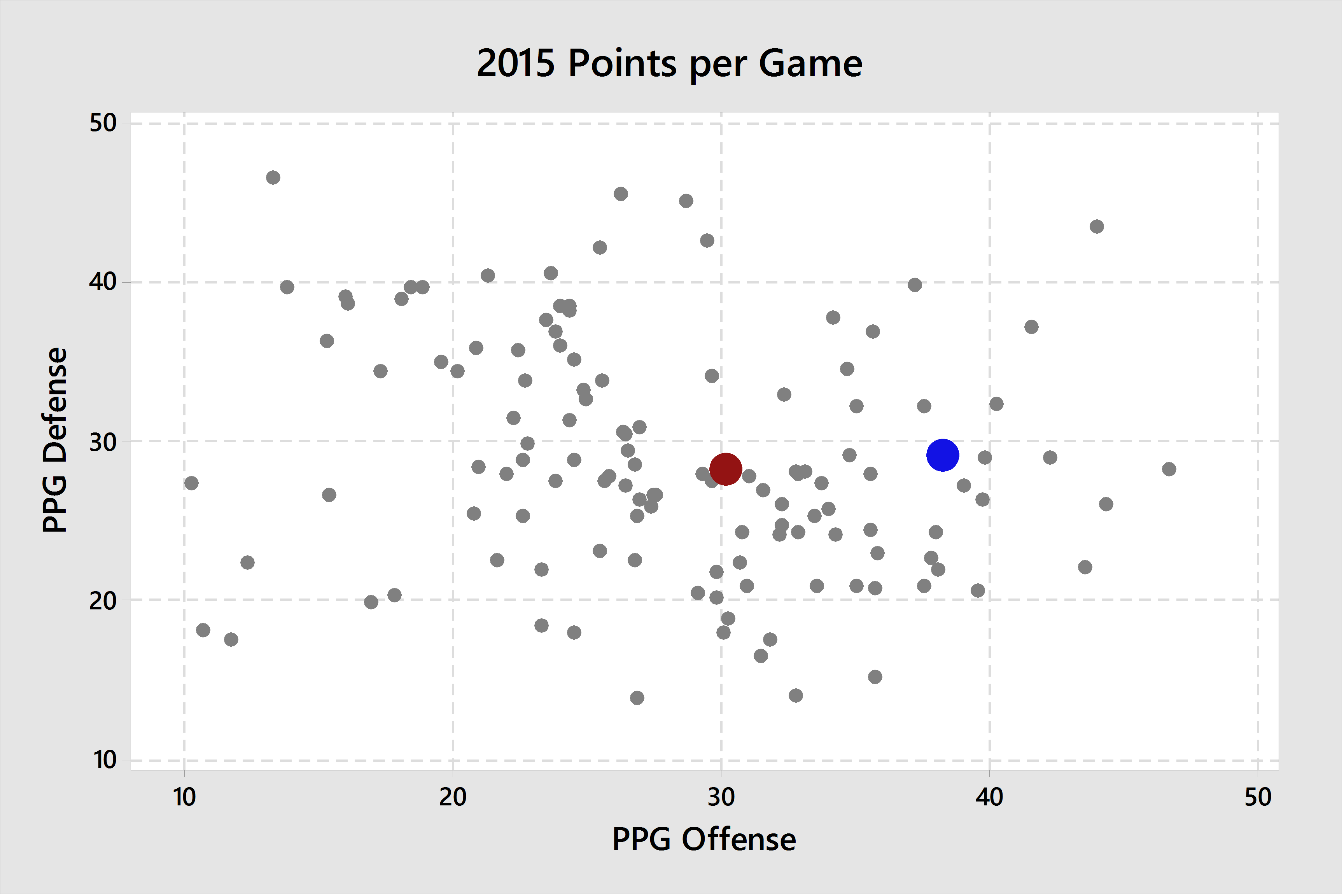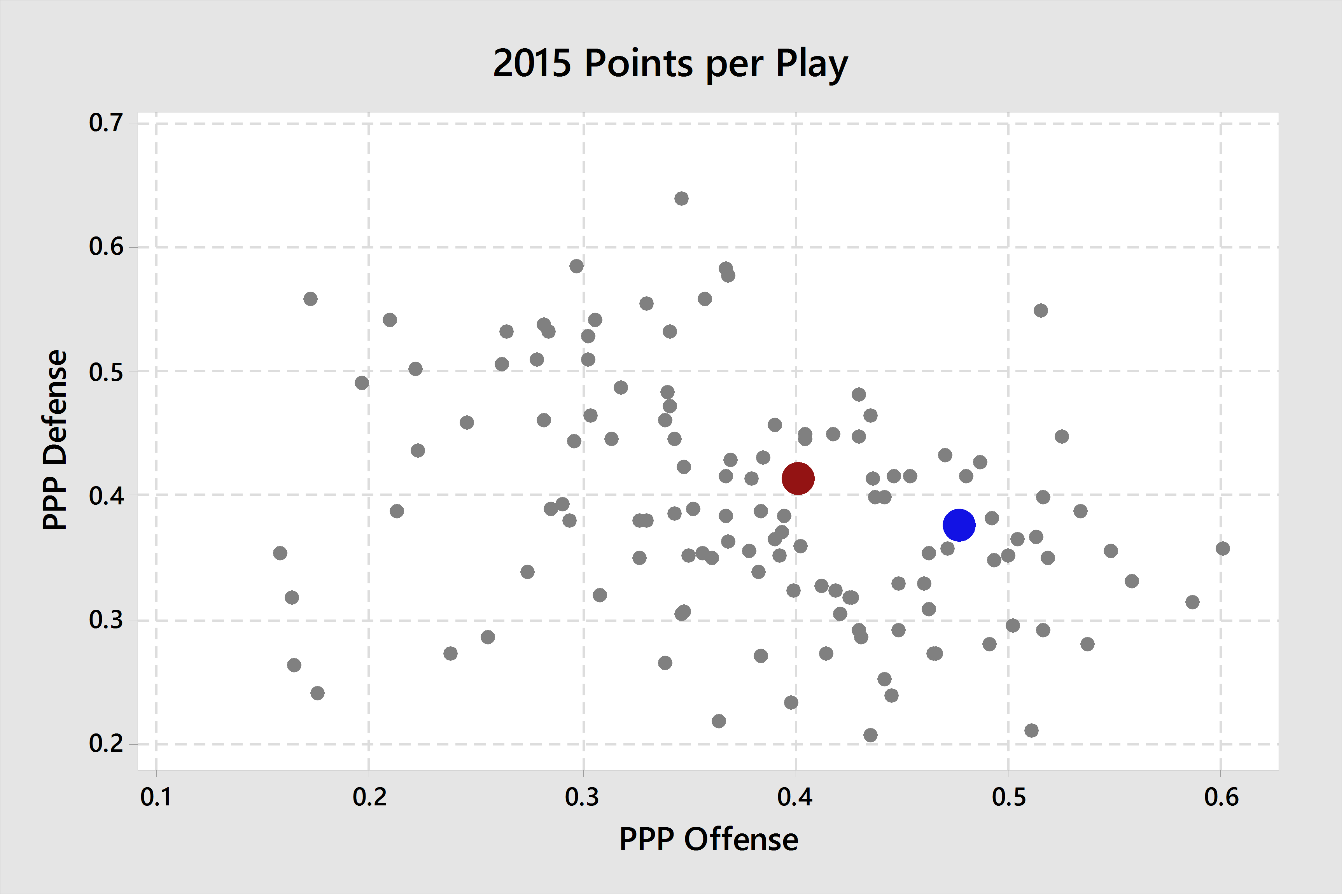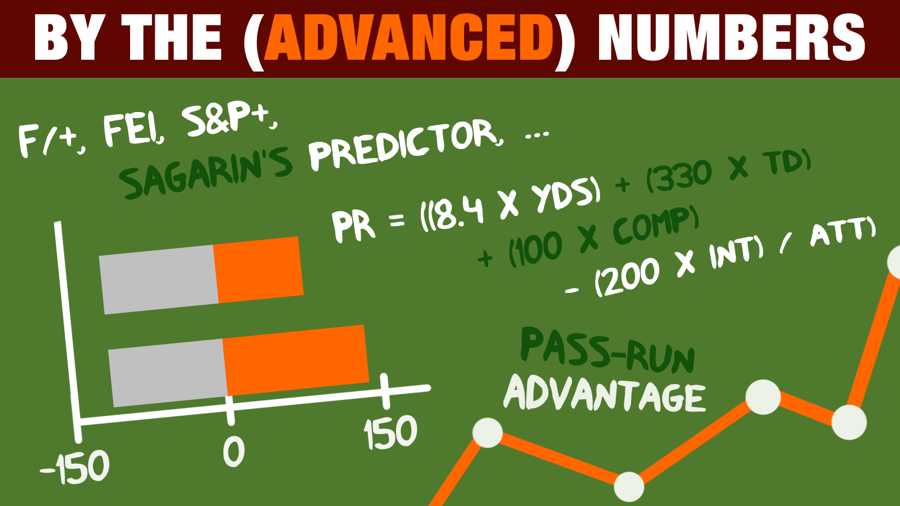Baseball followers who stick to traditional metrics tend to describe sabermetrics as complicated statistics. Stats that don't quantify how good a player is any better than an eye test. The latter part of that sentiment is demonstrably false and not worth spending any portion of this article on. But the first part – that sabermetrics is complicated – underscores the negative perception is more about a lack of understanding than a genuine criticism. Consider the sabermetrics concept that on base percentage is more important than batting average: neither calculation is complicated, but on base percentage better describes a player's contribution than batting average.
Football is a more difficult sport to describe statistically than baseball, but the same challenges exist concerning the perception of "advanced" numbers as opposed to those traditionally used. However, some of those advanced statistics are simply a better indicator for how a player or team is performing than what regularly shows up on ESPN's bottom line or the box score.
These are the "advanced" stats that will define Justin Fuente's first season as head coach of the Hokies, and why they are important.
Points per Play
For many years, Hokie fans hung their hats on Bud Foster producing defenses that ranked at or near the top nationally in points allowed per game. But there's a dirty little secret to the statistic: the offense was often run to drain clock and thereby limit possessions and the number of plays opponents would run. If your defense faces fewer opponent possessions, they will give up fewer overall points, but that doesn't make the defense inherently better. Make no mistake, they were great defenses and you don't jump from middle of the pack to elite simply by limiting possessions, but if you want to know how good a defense is a much better way of measuring would be to take out the influence of number of plays and simply calculate how many points they allow per play.
During the competitive portion of the game, Fuente and the Hokies' offense will drive a much faster pace than fans are used to, and less clock will be used. As a result, it is all but certain that the defense will face more plays than usual and give up, as a whole, more points per game.
In 2015, here are the points per game scored and allowed by every team in FBS, with Virginia Tech and Memphis highlighted:

Now here are points per play for 2015:

For the Hokies, the team rates about the same in each. But examine what happens to the Memphis defense as the metric changes from points allowed per game to points allowed per play. The Tigers moves from well below average (80th nationally) to just above average (60th nationally). Because the Memphis offense gave their opponents more possessions they gave up more overall points, but points per play show the defense was more effective than that statistic would suggest.
For long-time fans used to 20-13 games, seeing scores like 34-23 may feel like the defense has slipped at the expense of an improved offense. But points per play cuts right through that myth.
Pace
Pace is simply how quickly the offense is able to run plays. It predominantly comes down to how quickly the offense can line up and snap the ball after a down. The offense controls pace and the defense must be react to it. Coaches who have adopted fast pace believe it's advantageous for a few reasons. The defense has no time to shift after lining up and must show their cards immediately. This can catch a defense out of position or force a mental mistake. Also, in theory the opposing defense will get tired before the well-conditioned offense does. There is almost certainly some degree of merit to each of these.
In addition to tactical advantage, there is another good reason for the better team to play with pace: sample size. Simply put, larger samples will trend towards the mean. So if the expected points per drive are in the offense's favor, it's in its best interest to increase the sample size by increasing the number of drives as much as possible. Conversely, this is why a key component of underdog strategy in football is to play at a slow pace and limit the number of drives.
This can play out in very meaningful ways — consider that given the same per-drive points, two games played at different paces might end up with scores of 20-14 or 30-21 going into the final drive. In the first case, it's a one-possession game. The second scenario requires that play, plus a recovery, plus another low-probability play. And the only difference was pace.
Time of Possession
Repeat after me: I will not value time of possession. I will not value time of possession. I will not value time of possession.
Even before Fuente's arrival at Virginia Tech, time of possession was an irrelevant stat that should have never been used as a measure of who played better or "controlled the game". Teams with solid leads intentionally run out the clock, and teams that are behind intentionally try to save clock. So time of possession is a result of how a team is playing, and not the cause of it.
Since teams obviously start manipulating clock later in games based on the score, consider just the first half of games. If time of possession is a meaningful indicator of the offense controlling the game and performing better, then better offenses should show a higher percentage of the possession in the first half. Here are the top five and bottom five teams in first half time of possession in 2015 according to TeamRankings.com with their S&P+ offense ranking in parentheses:
1. Stanford (5)
2. Rice (102)
3. Arkansas (1)
4. Western Michigan (24)
5. Southern Methodist (79)
124. Mississippi (9)
125. Hawaii (119)
126. UCLA (23)
127. Arizona (31)
128. North Carolina (17)
The extreme ends of the stat contain some of the best and some of the worst offenses in the country. Because time of possession is not a good indicator.
With an anticipated increase in pace, the statistic becomes even more meaningless. For simplicity, imagine a fantasy scenario where on every drive, Virginia Tech runs 10 plays and takes two minutes off the clock and scores a touchdown. Their opponents run only 5 plays on each drive but at a slower pace and also use two minutes on the clock and then punts. At the end of the game, time of possession is tied 30:00-30:00 but Virginia Tech has won 105-0. Hokie fans laugh and high five their way out of the stadium to go home and enjoy some Thanksgiving leftovers.
That's obviously a simplistic scenario but makes the point...the speed in which you run plays has a drastic impact on time of possession, but is used as an advantage. Time of possession would suggest it was a disadvantage. So please repeat one more time: I will not value time of possession.


Comments
Please join The Key Players Club to read or post comments.
Please join The Key Players Club to read or post comments.
Please join The Key Players Club to read or post comments.
Please join The Key Players Club to read or post comments.
Please join The Key Players Club to read or post comments.
Please join The Key Players Club to read or post comments.
Please join The Key Players Club to read or post comments.
Please join The Key Players Club to read or post comments.
Please join The Key Players Club to read or post comments.
Please join The Key Players Club to read or post comments.
Please join The Key Players Club to read or post comments.
Please join The Key Players Club to read or post comments.
Please join The Key Players Club to read or post comments.
Please join The Key Players Club to read or post comments.
Please join The Key Players Club to read or post comments.
Please join The Key Players Club to read or post comments.
Please join The Key Players Club to read or post comments.
Please join The Key Players Club to read or post comments.
Please join The Key Players Club to read or post comments.
Please join The Key Players Club to read or post comments.
Please join The Key Players Club to read or post comments.
Please join The Key Players Club to read or post comments.
Please join The Key Players Club to read or post comments.
Please join The Key Players Club to read or post comments.
Please join The Key Players Club to read or post comments.
Please join The Key Players Club to read or post comments.
Please join The Key Players Club to read or post comments.
Please join The Key Players Club to read or post comments.
Please join The Key Players Club to read or post comments.
Please join The Key Players Club to read or post comments.
Please join The Key Players Club to read or post comments.
Please join The Key Players Club to read or post comments.
Please join The Key Players Club to read or post comments.
Please join The Key Players Club to read or post comments.
Please join The Key Players Club to read or post comments.
Please join The Key Players Club to read or post comments.
Please join The Key Players Club to read or post comments.
Please join The Key Players Club to read or post comments.
Please join The Key Players Club to read or post comments.
Please join The Key Players Club to read or post comments.
Please join The Key Players Club to read or post comments.
Please join The Key Players Club to read or post comments.
Please join The Key Players Club to read or post comments.
Please join The Key Players Club to read or post comments.
Please join The Key Players Club to read or post comments.
Please join The Key Players Club to read or post comments.
Please join The Key Players Club to read or post comments.
Please join The Key Players Club to read or post comments.
Please join The Key Players Club to read or post comments.
Please join The Key Players Club to read or post comments.
Please join The Key Players Club to read or post comments.
Please join The Key Players Club to read or post comments.
Please join The Key Players Club to read or post comments.
Please join The Key Players Club to read or post comments.
Please join The Key Players Club to read or post comments.